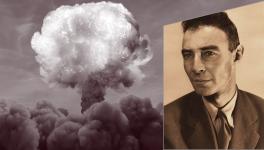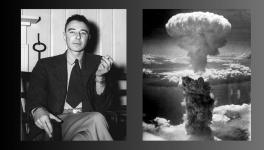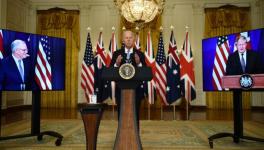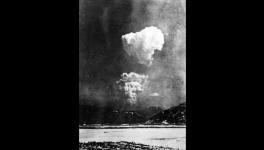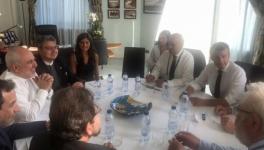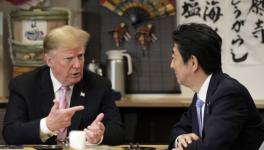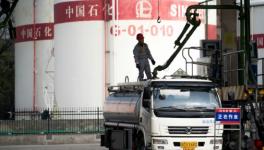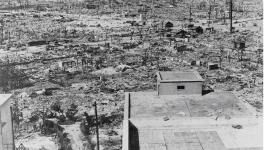The Documentary About Hiroshima and Nagasaki The U.S. Didn't Want Us to See
Sixty five years ago this week, immediately after two atomic bombs detonated over Hiroshima and Nagasaki, killing tens of thousands of people in an instant and leaving many more to die, the Japanese started shooting.
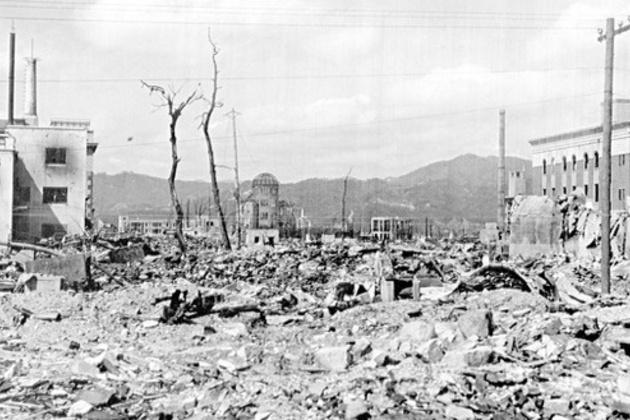
They weren’t using bullets, but film, hoping to document the first, and until now, only use of atomic weapons on humans.
See also: The War Game, a Period Portrait of Nuclear War
When American troops arrived in Nagasaki and stumbled upon one of the cameramen, from the legendary film company Nippon Eiga Sha, shooting amidst the rubble, they promptly arrested him and confiscated his film. The Americans would halt the entire production in fact. When they let it continue, they did so as producers, paying for the production and thus retaining the right to the film – and the right to keep it concealed for decades.
But The Effects of the Atomic Bomb on Hiroshima and Nagasaki was the only film shot immediately after the bombing, while the cities were still deserts of debris, the wounds were fresh, and the thousands suffering from radiation sickness were still alive.
The finished product, narrated in English and 22 minutes long, is chillingly matter-of-fact, not just in its account of the bombing but in its description of the two cities, like a bland tourism film. But everything is in the past tense: “The population density was slightly greater than Brooklyn, New York,” says the narrator about Hiroshima. Later, during a rudimentary animation of burning, he describes
“a firestorm … drawing air into the vortex at a velocity of 30, 40 miles an hour … Heat, liberated in one blinding flash by the explosion, caused flash burns and may have ignited isolated fires as far as a mile from Ground Zero.”
Lost and found
After its completion, the Japanese filmmakers were told to pack up all their materials and send them to America. While keeping some footage secreted away in the false ceiling of the cinematographer’s studio, they sent the rest of their footage, knowing that they were risking detention if they didn’t. They also knew that anything they sent to America might never be seen again.
It wouldn’t have been, if not for the determination of an American Army filmmaker named Daniel McGovern. Responsible for producing miltiary documentaries in Japan, he supported the work of the Japanese documentarians; once back in the U.S., he even attempted to pave the way for a national release of the film through Warner Brothers in 1946, holding previews for the press.
Officials quickly nixed those plans. While McGovern would keep pushing for a public release of the film, he hid a 16mm print on a midwestern Air Force base. The print was discovered, some two decades later, by scholar Erik Barnouw, who had been tipped off by the producer of the film, Iwasaki Akira. When Barnouw asked the Defense Department about the documentary, he was told in a letter that “reports of censorship remain unjustified.”
The original negative and production materials are missing to this day.
Here’s how historian Abe Mark Nornes describes the film:
No critic has ever put The Effects of the Atomic Bombings on Hiroshima and Nagasaki on their list of the greatest documentaries ever made, but this has something to do with how critics define greatness. It would mostly likely make the top of anyone’s list of films that people should see at least once in their lifetime—particularly if they come from a country armed with nuclear weaponry. From a certain perspective, this is a mind-numbingly boring science film; from another, it is a horror film that leaves one speechless and trembling. Most filmmakers trying to represent events as extreme as the holocaust or the atomic bombings run up against the specter of the unprepresentable. The strange thing about this film is that the filmmakers never make this effort to begin with. They simply describe the two events in Hiroshima and Nagasaki in the dry language of hard science. Nothing could be more unnerving.
Disclaimer: The views expressed here are the author's personal views, and do not necessarily represent the views of Newsclick
Get the latest reports & analysis with people's perspective on Protests, movements & deep analytical videos, discussions of the current affairs in your Telegram app. Subscribe to NewsClick's Telegram channel & get Real-Time updates on stories, as they get published on our website.









